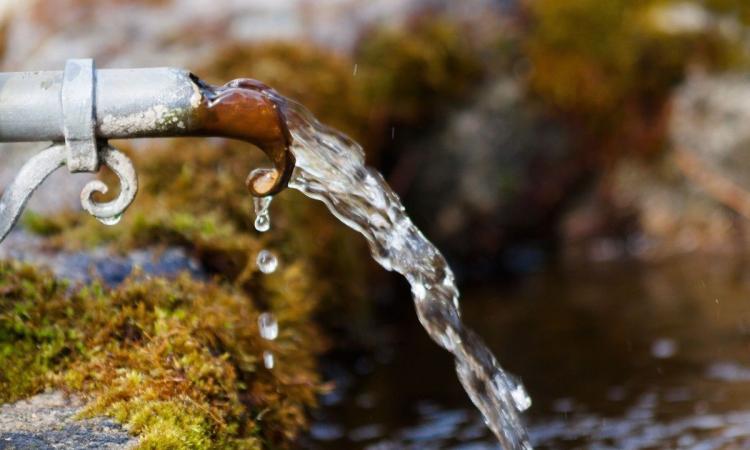
Groundwater continues to be extracted at frightening proportions in India and the fear of severe depletion of groundwater resources in the coming years is real. As if this is not enough, the available groundwater is also deteriorating in quality posing a severe threat to the health of the population.
India drinks water poisoned with uranium
A recent report titled 'Uranium occurance in shallow aquifers in India' published by Central Ground Water Board, Ministry of Jal Shakti, Department of Water Resources, River Development and Ganga Rejuvenation finds that the uranium contamination of groundwater is increasing in the country with several states reporting of increased uranium content in drinking water.
Uranium can be very harmful to the body. While water containing low amounts of uranium is safe to drink, high levels of uranium in food and drinking water can lead to severe health effects like kidney damage! More studies are however needed to understand the impacts of uranium on human health.
What is uranium and where does it come from?
Uranium is a naturally occurring radioactive element that occurs in low concentrations in nature. It is present in natural form in certain types of soils and rocks, especially granites and metasedimentary rocks, as well as younger sedimentary deposits.
Uranium can also be introduced in drinking water sources due to human induced activities such as mill tailings, emissions from the nuclear industry, and due to burning of coal and other fuels. Naturally occurring uranium has very low levels of radioactivity and chemical properties of uranium in drinking water are of greater health concern.
A number of factors are found to affect uranium contamination
- Amount of uranium contained in the sediments in an aquifer
- Water-rock interactions that lead to the leaching or extraction of uranium from the sediments or rocks
- Oxidation conditions that aid uranium to dissolve in water
- The interaction of the leached uranium with other chemicals in the groundwater, such as bicarbonate, sulphate which aids uranium to dissolve in water
- Human interventions such as overextraction of groundwater and increase in nitrate pollution due to excessive use of chemical fertilisers also trigger movement of uranium from the sediments into groundwater
Drinking water standards for uranium
U.S. EPA and the WHO have set drinking water standards for Uranium concentration in drinking water at 30 μg/L. The Atomic Energy Regulatory Board, India has prescribed the maximum limit of U in drinking water at 60 μg/L (ppb). However, the Bureau of Indian Standards (BIS) has not yet specified the norm for uranium level in drinking water.
Uranium distribution in groundwater in India
A total of 14377 groundwater samples were collected from groundwater monitoring stations (GWMS) established by CGWB for the study. The study found that uranium concentrations in ground water in shallow aquifers in the country varied from 0.0 to 2876 μg/L.
The most affected states in terms of percentage of groundwater samples found to have uranium concentration more than 30 μg/L (ppb) prescribed by World Health Organisation (WHO) included Punjab at 24.2 percent followed by Haryana at 19.6 percent, and other states such as Telangana, Delhi, Rajasthan, Andhra Pradesh and Uttar Pradesh.
Some states such as Karnataka, Madhya Pradesh, Tamil Nadu, Jharkhand, Chattisgarh, Gujarat, Himachal Pradesh, Maharashtra, Odisha, West Bengal and Bihar also showed uranium concentration above the threshold level of 30 μg/L in localised pockets.
What can be done to deal with uranium contamination
- Inclusion of uranium monitoring in the current water quality monitoring program in India.
- More research on health risks associated with areas having high uranium contamination of water and soil
- More focus on how uranium contamination and poisoning can be prevented in the future
- Including a uranium standard in the Bureau of Indian Standards’ Drinking Water Specification
- Establishing monitoring mechanisms and systems to identify at-risk areas
- Treatment of groundwater contaminated with uranium for safe drinking
The report describes methods for treatment of uranium contaminated groundwater that include:
- Adsorption or ion exchange
- Reactive sorption
- Precipitation
- Reverse osmosis:
- Stripping:
The report also suggests some remedial strategies to reduce the amount of uranium from mixing with groundwater sources based on in-situ chemical stabilisation and include use of:
- Redox Technologies: These technologies attempt to reduce oxidation that triggers leaching of uranium in aquifers. However, one of the problems with these technologies is that the uranium precipitate can get re-oxidised over time.
- Co-precipitated Iron Oxy-hydroxide: This technology gives only short term results and leads to temporary stabilisation and the reaction is reversed as the precipitate ages.
- Phosphate Precipitation Technologies: These technologies apply and modify phosphate with uranyl (uranium VI) forms to remove soluble uranium and prevent further dissolution of uranium. However, this group of technologies requires further development.
- Flushing Technologies: This uses a variety of leaching solutions to dissolve solid-phase uranium and hydraulic extraction techniques to remove the soluble uranium. But this process is difficult to implement.
The report can be accessed here
/articles/uranium-drinking-water-growing-concern-india